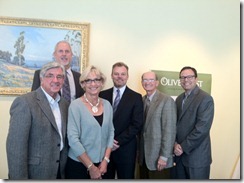Starting a tax-exempt organization is a multi-step process. With more than 30 different types of tax-exempt organizations defined in the tax code, it is no wonder that it can be both daunting and confusing. In order to help you navigate the system, this article will walk you through each step.
The first step is to form the organization under state law as a corporation, a trust or an unincorporated association. The organization must have articles of organization that specifically limit the organization to one or more exempt purposes and stop the organization from participating in activities that do not further one or more of the exempt purposes, unless those activities are insubstantial. The organization should also generate by-laws which dictate what it can and cannot do. While by-laws are not required under federal tax law, state laws may require nonprofit organizations to have them.
The next order of business is to obtain a federal identification number for the organization. You can apply for one on the IRS’s website or by filing Form SS-4.
You will then need to request tax-exempt status from the IRS. You can apply under code section 501(c)(3) using Form 1023 or under code section 501(a) using Form 1024. About half of all nonprofit organizations are formed under section 501(c)(3). The applications are extensive and require information detailing the purposes and activities of the organization, budgets, board of directors, etc. The IRS has issued publications to assist charities in applying for tax-exempt status. You can review IRS Publication 4220, “Applying for 501(c)(3) Tax-Exempt Status,” and Publication 557, “Tax-Exempt Status for Your Organization,” for additional information. Many organizations utilize an attorney or accountant to assist in completing the applications.
After you have sent in your application with the required fees, you will receive a determination letter from the IRS. This letter will indicate whether the IRS will recognize or reject your organization’s exempt status. If you are denied a tax exemption, you can go to an IRS Appeals Office within 30 days of the determination to discuss the matter with an IRS appeals agent.
There are a few organizations which do not need to file Form 1023 or 1024. They are churches and related organizations, organizations that are not private foundations and have gross receipts up to $5,000, and chapters of organizations controlled by national or central bodies that already have exempt status.
Tax-exempt organizations are required to file Form 990 each year. There are also annual informational forms required by most states. We will explore the annual filings in detail in an upcoming article. Stay tuned!
If you have any questions about this article or any other matter, please contact our office at (714) 836-8300.

